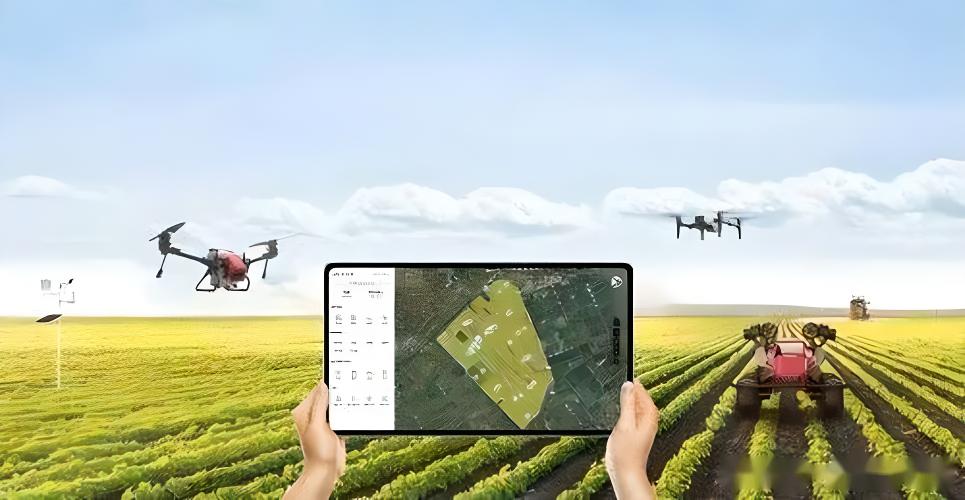

— Blogs —
—Products—
 Consumer hotline +8618073152920
Consumer hotline +8618073152920 WhatsApp:+8615367865107
Address:Room 102, District D, Houhu Industrial Park, Yuelu District, Changsha City, Hunan Province, China
Product knowledge
Time:2024-01-01 12:07:03 Popularity:1977
Sensors play a vital role in smart agriculture and they are widely used to monitor and regulate various environmental parameters to optimize crop growth and improve yields. Here are some of the major applications of sensors in smart agriculture:

Soil moisture and pH monitoring: By using soil moisture and pH sensors, farmers can get real-time information about the moisture content and acidity of the soil to precisely control irrigation and fertilization. These sensors can help avoid waste or deficiencies due to over-irrigation and maintain proper soil moisture and pH levels for healthy crop growth.
Temperature and Light Monitoring: Temperature and light are important factors that affect crop growth. Temperature sensors can monitor the temperature of the soil and air to help farmers understand the temperature conditions of the environment in which their crops are growing. And light sensors measure light intensity, providing farmers with real-time information about whether their crops are getting enough light. This data can help farmers adjust environmental conditions, such as ventilation or supplemental lighting, to meet the needs of their crops.
Air humidity monitoring: Air humidity is one of the factors that affects stomatal function and transpiration in plants. By using air humidity sensors, farmers can understand air humidity levels and adjust environmental humidity as needed to promote proper plant physiological function.
Pest and Disease Detection: Pests and diseases are a major threat to agricultural production. The use of sensors can monitor crop growth and unusual changes to detect signs of pests and diseases in a timely manner. These sensors are often combined with image recognition technology to detect the presence of pests and diseases by analyzing features such as the color, shape and texture of the crop. Once a pest or disease is detected, the sensor will sound an alarm to alert the farmer to take appropriate control measures.
Precision farming practices: In precision farming practices, sensors are widely used for monitoring and managing farmland. Through a network of sensors arranged in the farmland, data can be collected in real time from various aspects such as soil, weather, and crop growth. These data are analyzed to provide farmers with guidance on farmland management and decision-making, such as precision irrigation, fertilization, seeding, and weeding. Precision agriculture practices help to improve resource efficiency, reduce environmental burdens and increase crop yields.
Let's go through an example to better understand the use of these sensors in smart agriculture.
Suppose a farm grows tomatoes. During the planting process, the farmer can use the following sensors to monitor and manage the crop:
Soil Moisture Sensor: before irrigation, the farmer can use a soil moisture sensor to measure the moisture content in the soil. If the soil is too dry, the sensor will signal the need for irrigation. This ensures that tomatoes are getting the right amount of water, which can help improve yield and quality.
Soil pH Sensor: The acidity or alkalinity of the soil is critical to the growth of tomatoes. By using soil pH sensors, farmers can understand the acidity of the soil and take the necessary steps to adjust the pH to ensure that the tomatoes are able to absorb the nutrients they need.
Temperature Sensors: Temperature has a significant impact on the growth and development of tomatoes. Temperature sensors monitor soil and air temperatures to help farmers understand the temperature conditions of the environment in which their tomatoes are growing. If the temperature is too high or too low, the farmer can take appropriate measures to regulate the temperature to promote the healthy growth of tomatoes.
Air Humidity Sensor: The humidity sensor monitors the level of humidity in the air. During tomato growth, humidity has a significant impact on plant health and yield. If humidity is too low, it may cause the plant to lose water; if it is too high, it may lead to disease. By monitoring humidity, farmers can take appropriate measures to maintain proper humidity levels and promote tomato growth.
Light Sensor: Light is an important factor for plants to photosynthesize. By using light sensors, farmers can understand the intensity and duration of light and adjust shading facilities or supplemental lighting as needed to ensure that tomatoes receive enough light to improve yield and quality.
By using these sensors, the farmer can get real-time environmental data and information about the health of the crop. This data can help farmers make more informed decisions to optimize the production process, improve tomato yield and quality, and reduce risks and costs.
In conclusion, the use of sensors in smart agriculture is widespread and important. They provide farmers with real-time, accurate monitoring data on environmental parameters, helping them to better understand and manage their farmland, optimize crop growing conditions, and improve the efficiency and effectiveness of agricultural production. With the continuous progress and innovation of technology, more advanced sensors will be applied in smart agriculture in the future to promote the intelligent and sustainable development of agricultural production.
Prev:Top 10 Sensors Used in Smart Farming
Next:What is the difference between a rain sensor and a moisture sensor?
Related recommendations
Sensors & Weather Stations Catalog
Agriculture Sensors and Weather Stations Catalog-NiuBoL.pdf
Weather Stations Catalog-NiuBoL.pdf
Related products
 Combined air temperature and relative humidity sensor
Combined air temperature and relative humidity sensor Soil Moisture Temperature sensor for irrigation
Soil Moisture Temperature sensor for irrigation Soil pH sensor RS485 soil Testing instrument soil ph meter for agriculture
Soil pH sensor RS485 soil Testing instrument soil ph meter for agriculture Wind Speed sensor Output Modbus/RS485/Analog/0-5V/4-20mA
Wind Speed sensor Output Modbus/RS485/Analog/0-5V/4-20mA Tipping bucket rain gauge for weather monitoring auto rainfall sensor RS485/Outdoor/stainless steel
Tipping bucket rain gauge for weather monitoring auto rainfall sensor RS485/Outdoor/stainless steel Pyranometer Solar Radiation Sensor 4-20mA/RS485
Pyranometer Solar Radiation Sensor 4-20mA/RS485
Screenshot, WhatsApp to identify the QR code
WhatsApp number:+8615367865107
(Click on WhatsApp to copy and add friends)
